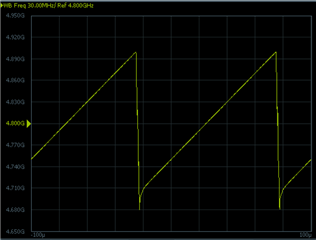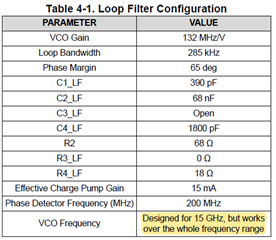Hi,
I'm mesuring VTUNE pin of the eval-board LMX2594EVM and I found the VTUNE voltage mesured on scope is inconsistent to the expected values.
In fact, I would like to generate a linear sawtooth ramp from 5GHz to 5.025GHz (so VCO from 10GHz to 10.05GHz). The chip lock @10GHz with VTUNE=1.32V.
The settings are:
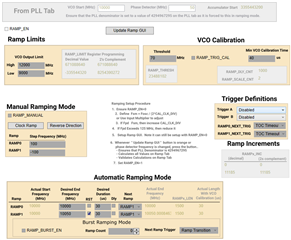
So for ramps from 10GHz to 10.05GHz, I was expecting the VTUNE varies from ~1.32V to 0.85V (voltage verified without ramp and calibration).
However I observed 2 cases:
- With VCO_CAPCTRL_FORCE=1, VCO_SEL_FORCE=1 and VCO_DACISET_FORCE=1 (VCO_SEL, VCO_CAPCTRL and VCO_DACISET values read back from the locked state @10GHz), the VTUNE variations are consistant:
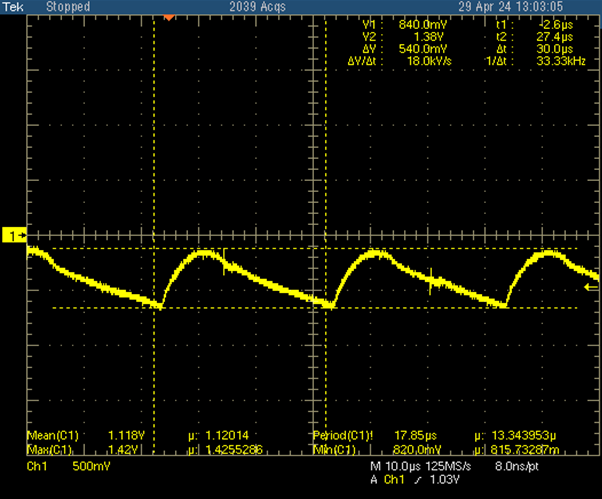 VTUNE between 1.38V and 0.84V --> OK
VTUNE between 1.38V and 0.84V --> OK
- But without forcing VCO_SEL, capcode, etc, the ramp on the spectrum analyser is OK but the VTUNE variations on the scope are inconsistent to expected values:
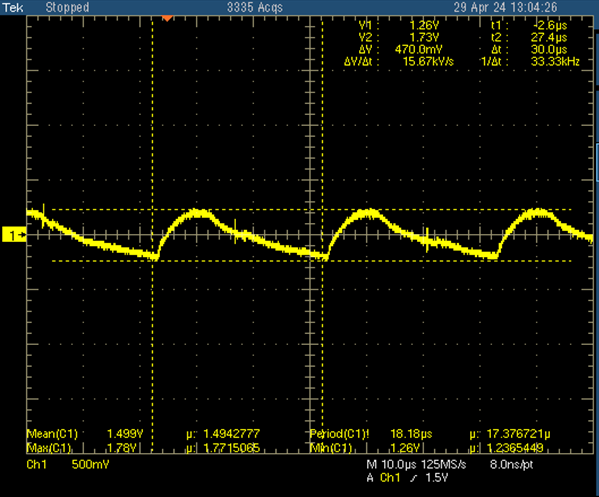 VTUNE between 1.73V and 1.26V --> NOK
VTUNE between 1.73V and 1.26V --> NOK
In terms of calibration free bandwith for this frequency @10GHz, I also generated a ramp from 10GHz to 10.01GHz and I got the similar results.
Another observation is: with forced settings, the lower freq. boundary of the ramp is lower than that without forced settings:
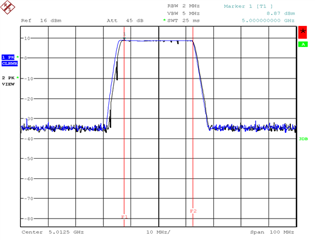 Black: FORCE=0; Blue: FORCE=1 (VCO, CAPCTL and DACISET)
Black: FORCE=0; Blue: FORCE=1 (VCO, CAPCTL and DACISET)
My question:
- Why I need to force VCO settings in order to get a consistent variations of VTUNE? The chip is not calibrating in my case I think....
THanks for your help.
XL



